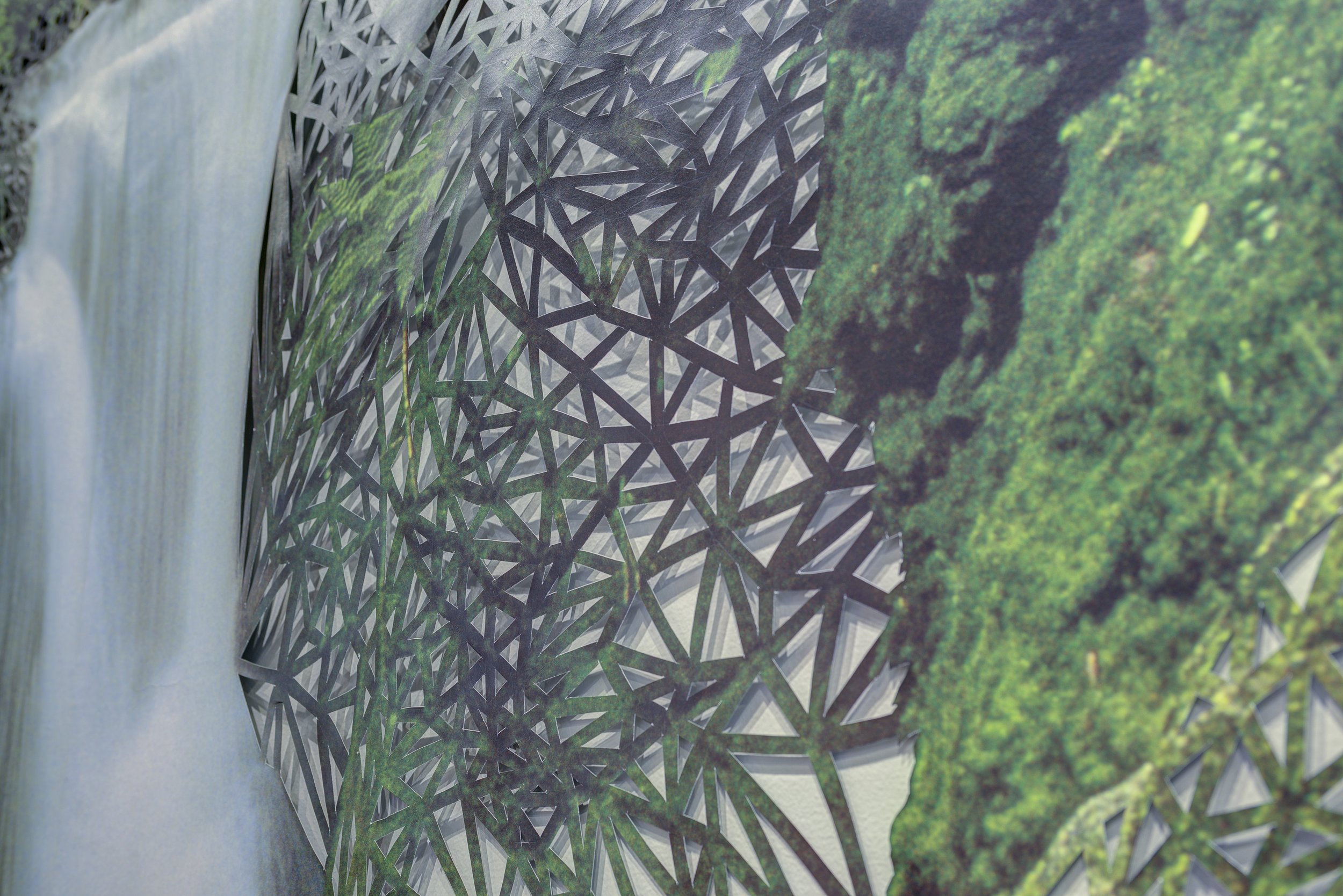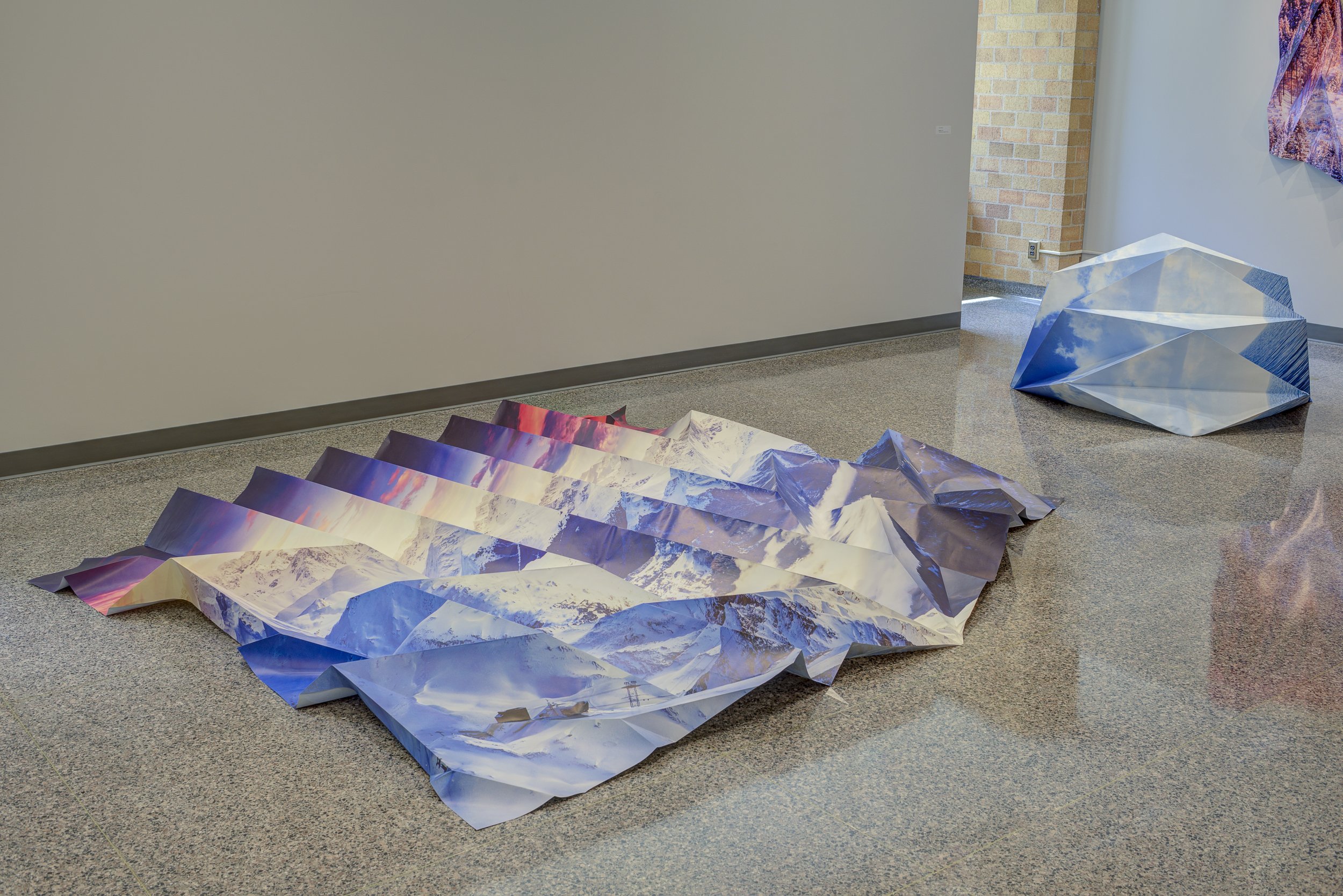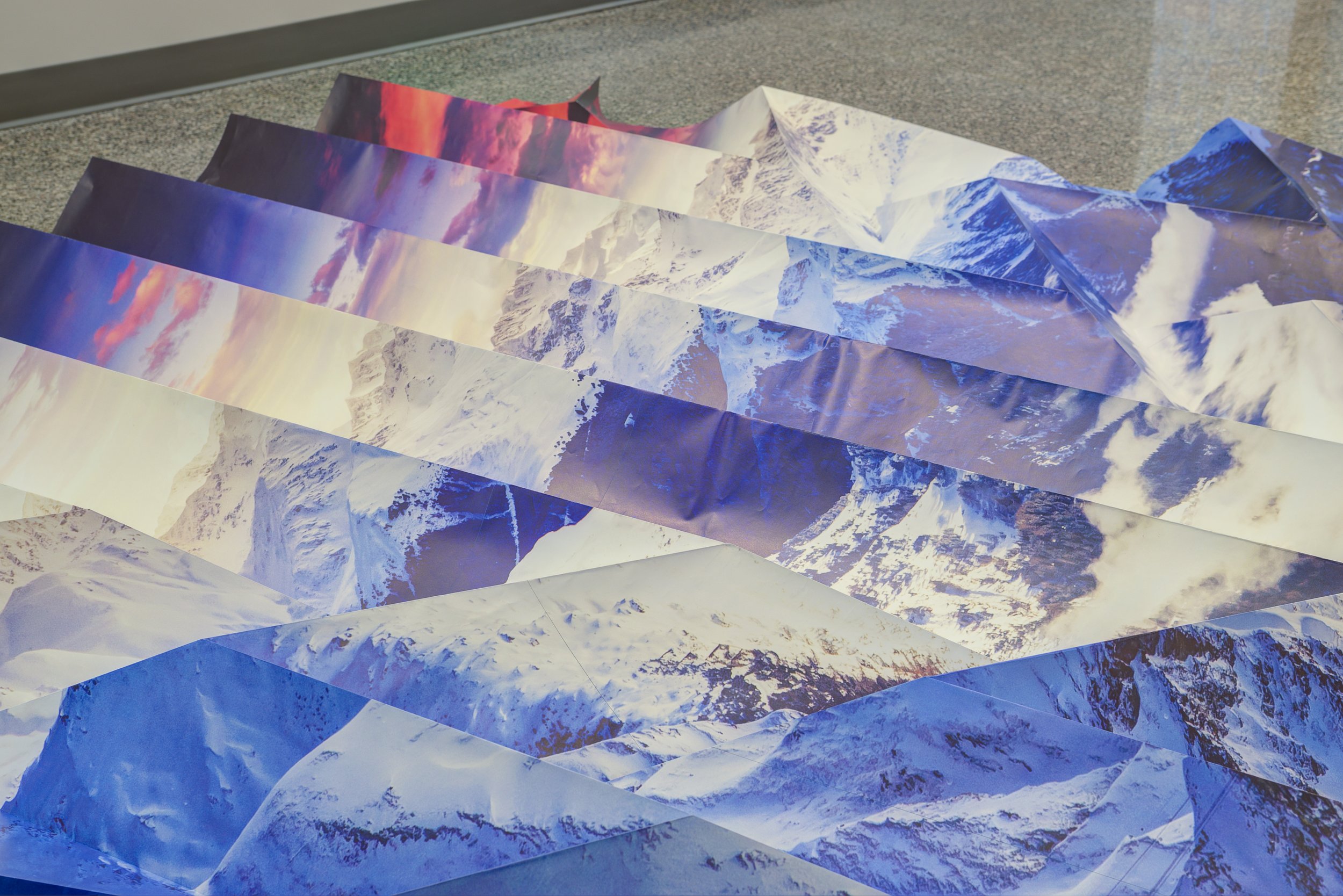SYSTEM SETTINGS | Alyssa Baguss
Through the contemporary digital lens of life, we are exposed to a constant flux of well-selected and over-edited images offering an unnatural view into the environment. While we can easily calm our innate wanderlust desire to physically travel to far locales through our obsession with screens, our expectations as to how we approach the world has been transformed. Just as system settings can be edited in software programs and applications to meet personal preferences, we customize our behaviors in a world dictated by online expectations. Whether going on the digital journey or physically stepping into nature, we select a setting to stage our experience, we play around with filters, and in the end, we lose sight of the natural world due to our desire of capturing versus experiencing. Has this in turn caused us to become apathetic? Do we lose our sense of how to interact with the environment and perhaps, even how to care for it?
At a time when we are constantly confronted with complex and daunting ideas of environmental destruction and global warming, it is easy to become disengaged. System Settings is a direct response to this loss of awareness. Rather than an acrimonious relationship, what if our want for technology and need for environmental stewardship nurtured a greater sense of activism? The works displayed here are the result of Alyssa Baguss’s 2017-18 Jerome Emerging Artist Fellowship and her exploration into how art and technology can inspire ecological empathy. The viewer is invited to witness the world through distilled moments that are immediate and tangible. We are reminded that to remain impassioned, perhaps we need to revitalize our own intimate relationships with nature. We must move beyond the flat screen and the constant scroll of a finger to reflect on how to, once again, alter our perceptions and become actively engaged with both the digital and physical world — to reset our settings.
- Marria Thompson, Department of Art History Gallery Curator
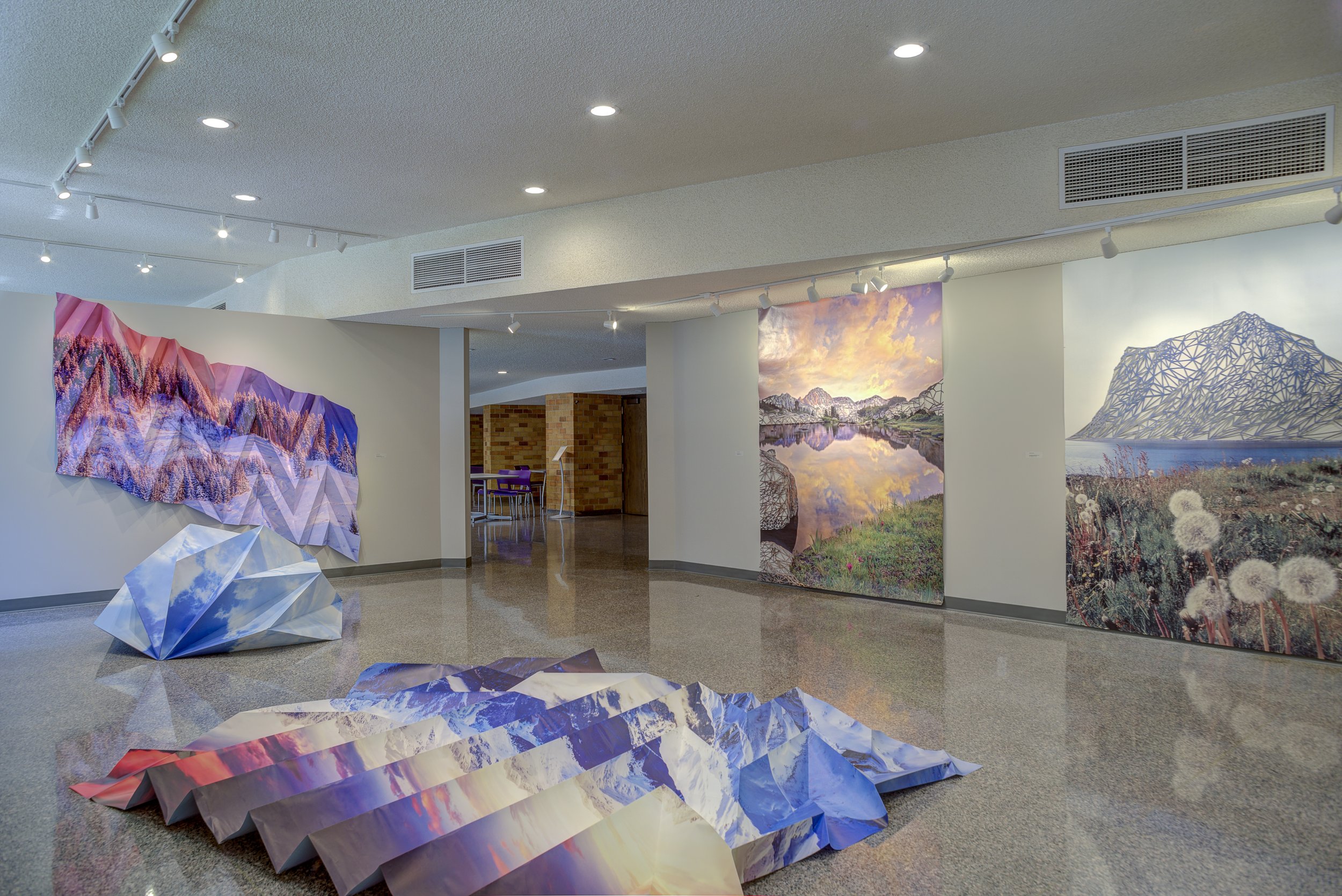

Alyssa Baguss, Alpine Glow (left), 2013, Cut wallpaper mural, 72” x 108” | Dandelion Mountain (right), 2014, Cut wallpaper mural, 72” x 108”
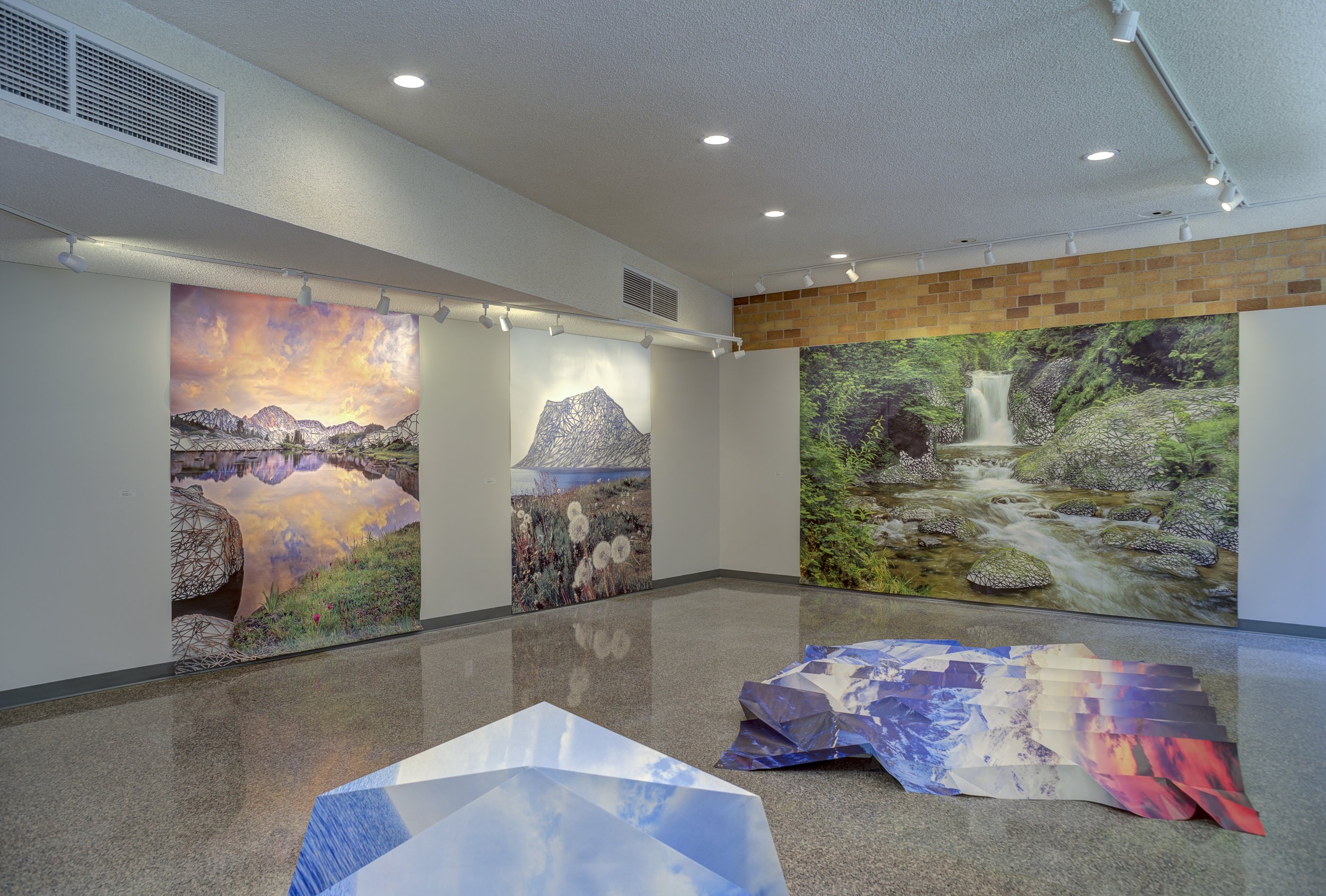

Alyssa Baguss, Elowa Falls, 2016, Cut wallpaper mural (back wall) | Mountainous, 2018, Folded photo wallpaper mural (floor)
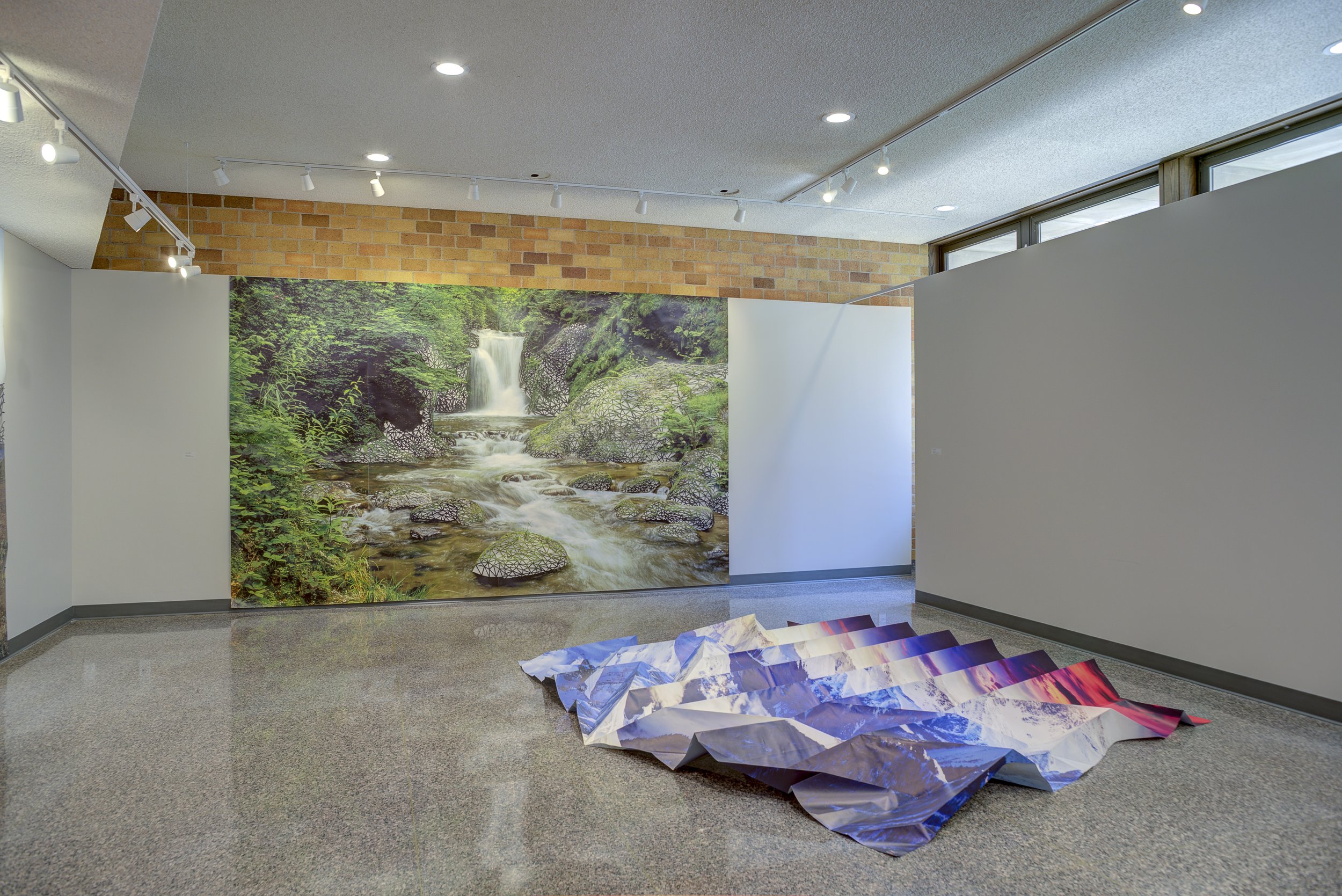

Alyssa Baguss, Elowa Falls, 2016, Cut wallpaper mural (back wall) | Mountainous, 2018, Folded photo wallpaper mural (floor, background) | Oceanic, 2018, Folded photo wallpaper mural (floor, foreground)

Alyssa Baguss, Oceanic, 2018, Folded photo wallpaper mural (floor) | Alps, 2018, Folded photo wallpaper mural
Alyssa Baguss
My practice examines this digital “wanderlust.” Wanderlust is the strong or irresistible impulse to travel and explore. It is often driven by the desire to escape and leave behind the familiar to experience the unknown world. The Internet has allowed us to wander to unfamiliar lands while never having to leave the comfort and safety of our homes. Travel anywhere via Google Earth, experience other worlds through NASA satellites and daydream quietly while pristine landscape images scroll through our screensavers. I am interested in how technology influences the way we experience the natural world and shapes our expectations of the landscape.
This new medium of virtual navigation is exchanging an actual experience for an abstraction of experience, forming new habits of thought and behavior about the natural world. This technological window results in a setting that has become literally flat to many of us. It is this intangible experience of the landscape that interests me as an artist. Acknowledging this transition from natural phenomena to intellectual conception, I see our relationship with the natural landscape becoming distant and foreign.
I mine online imagery of venerated environments depicted with billowing clouds, majestic mountains and mirrored lakes void of human presence. I then research satellite images of erosional patterns and topographical (elevation) data and cut, punch and fold these same digital characteristics on majestic wallpaper photo-murals. By cutting away the solid structure I remove the landscape, leaving behind only a reflection of what was once there. Using map folding techniques, I manufacture an experience mimicking the rough digital landscape of glitchy video games. These fractured pieces of land formations form new gem-like structures that fetishize even more-so the idealized landscapes of our intangible online world.
I work across disciplines with environmental scientists, choreographers, map makers and engineers to explore the ways we inhabit the outdoors and move through space. Together we question how digital wayfinding alters perception of place and if we ever really know where we are. My practice is rooted in this balancing act, teetering between analogue and digital experiences and how they alter our connection and relationship to the natural world.
Alyssa Baguss , Elowa Falls, 2016, Cut wallpaper mural, 108" x 132"
Alyssa Baguss, Mountainous, 2018, Folded photo wallpaper mural, 90" x 90"
Alyssa Baguss, Oceanic, 2018, Folded photo wallpaper mural, 60" x 60" x 36"

Alyssa Baguss, Alps, 2018, Folded photo wallpaper mural, 108" x 132"


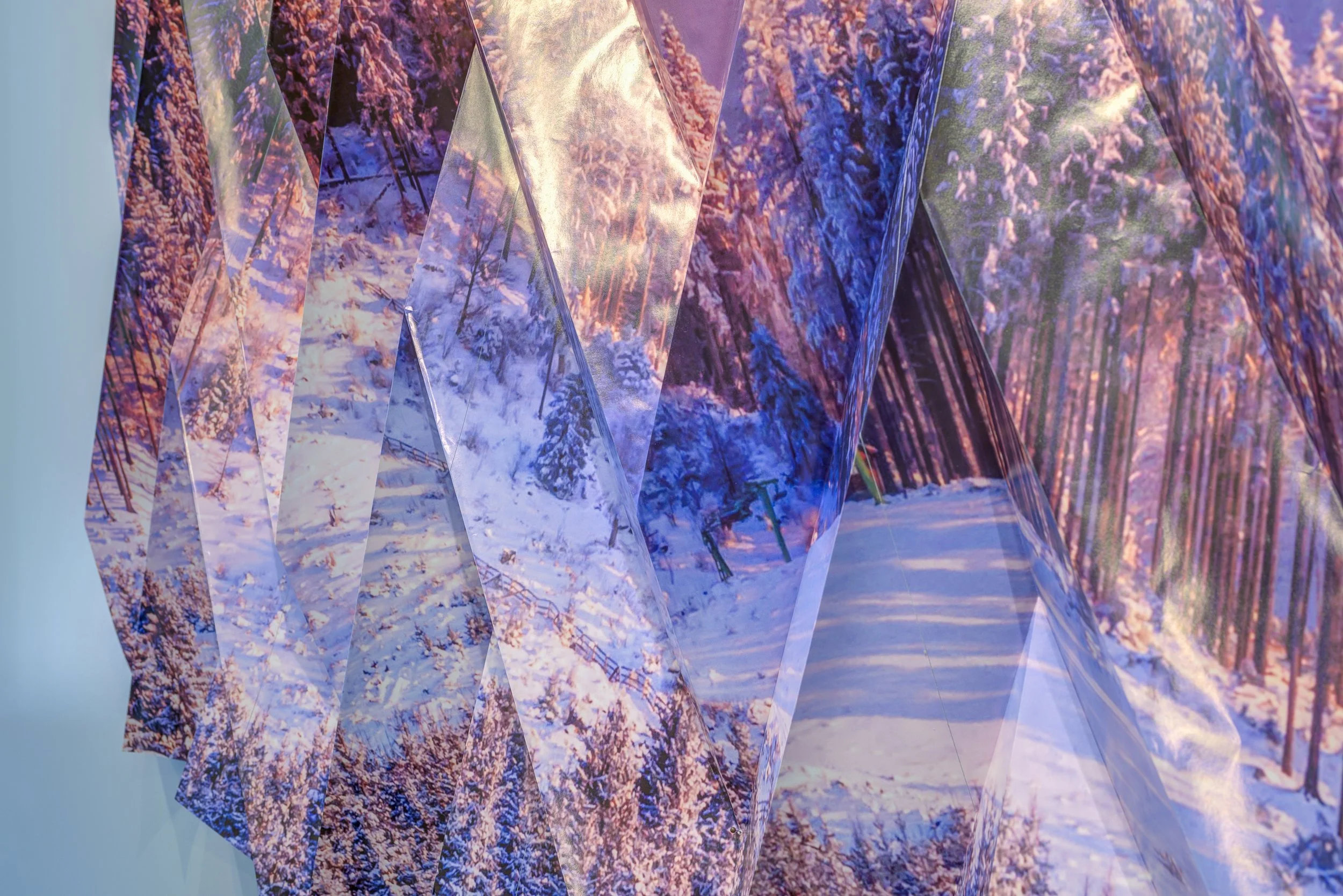


All artwork by Alyssa Baguss
All photographs by Seth Dahlseid



